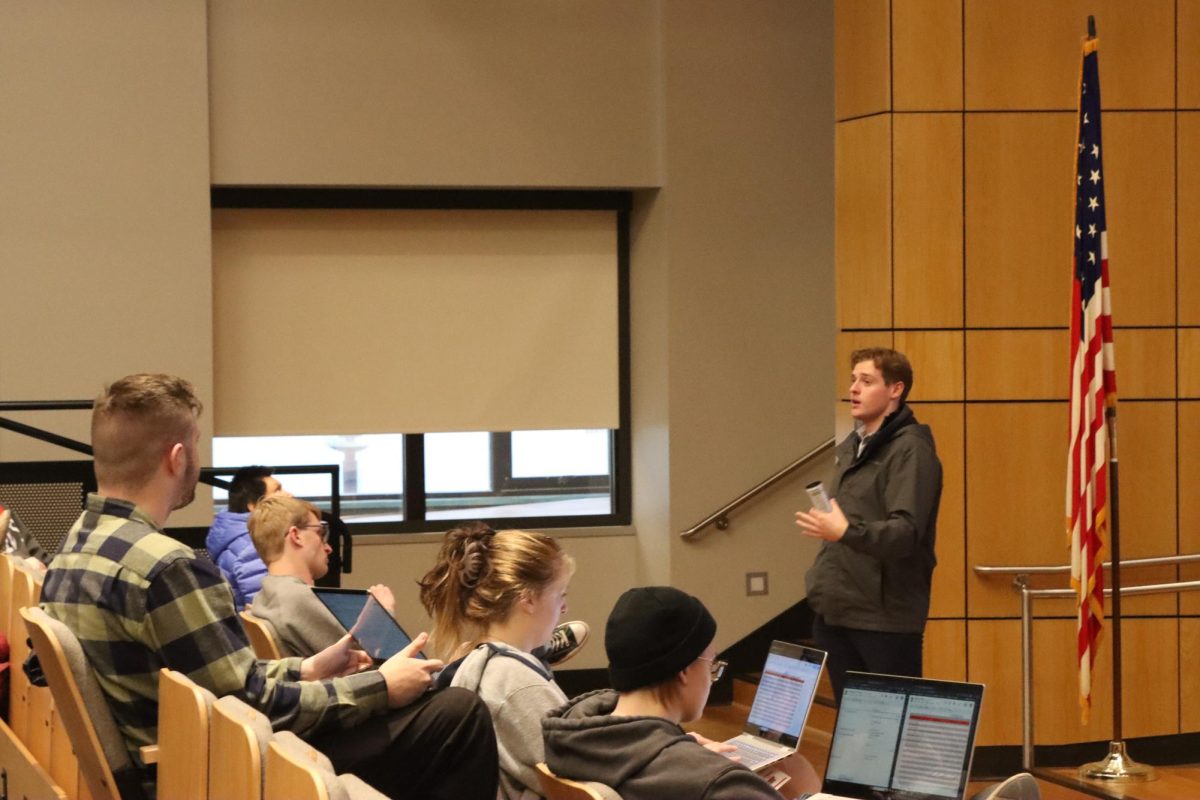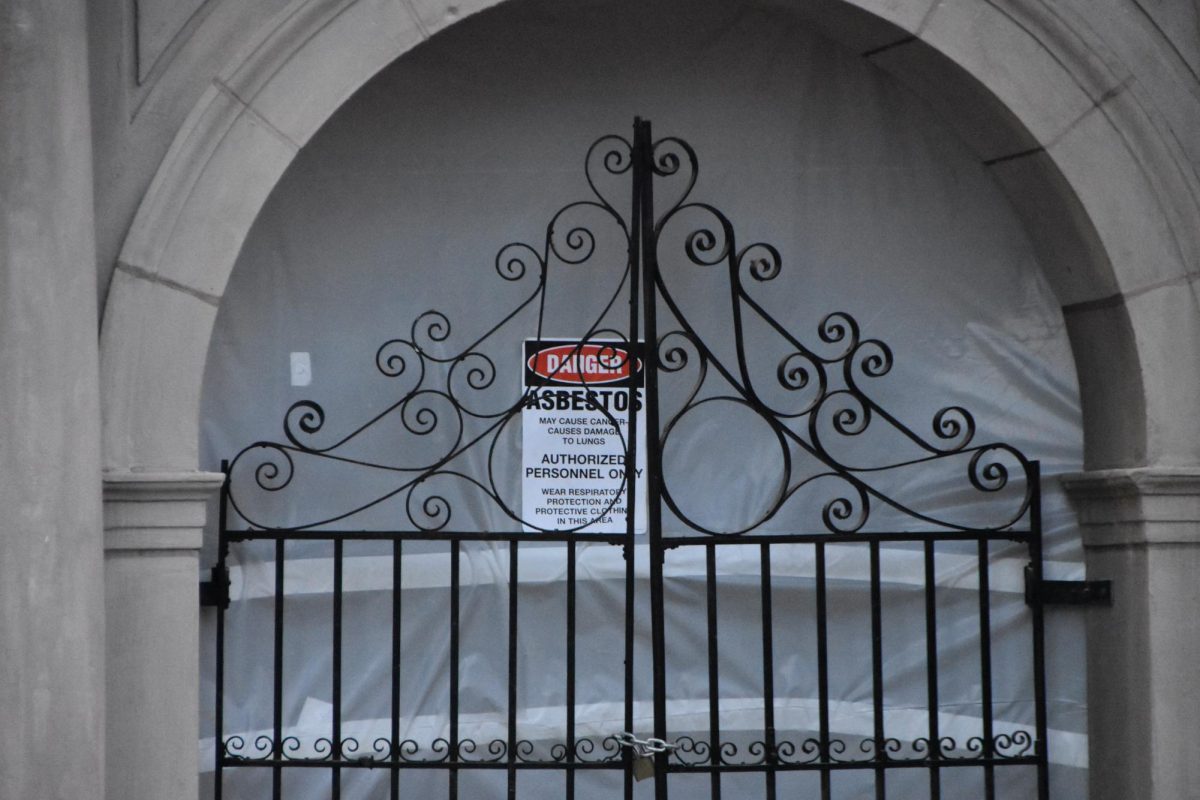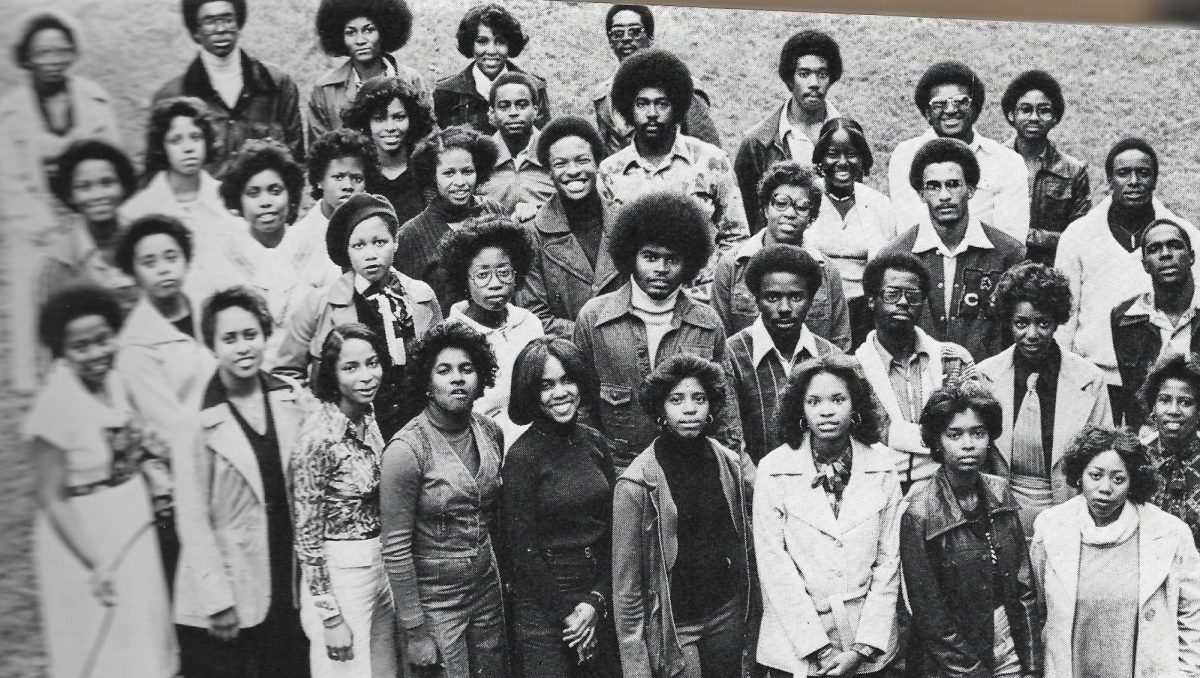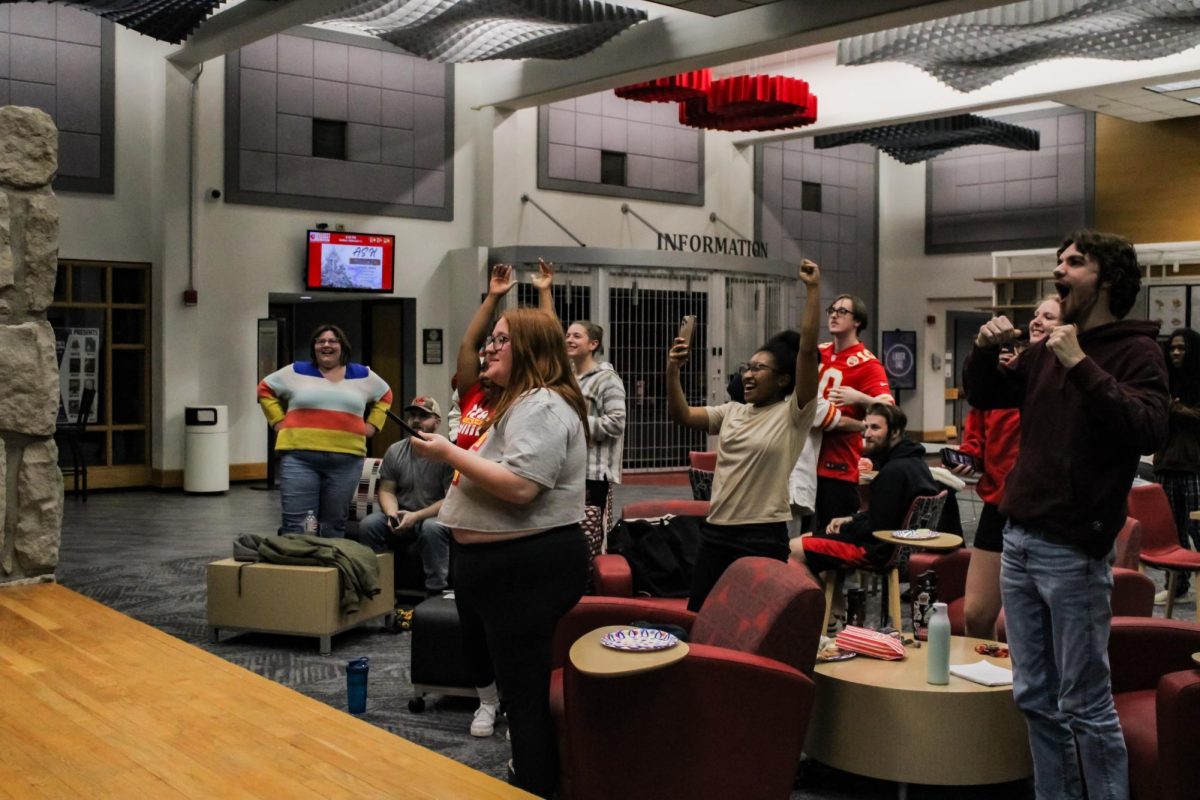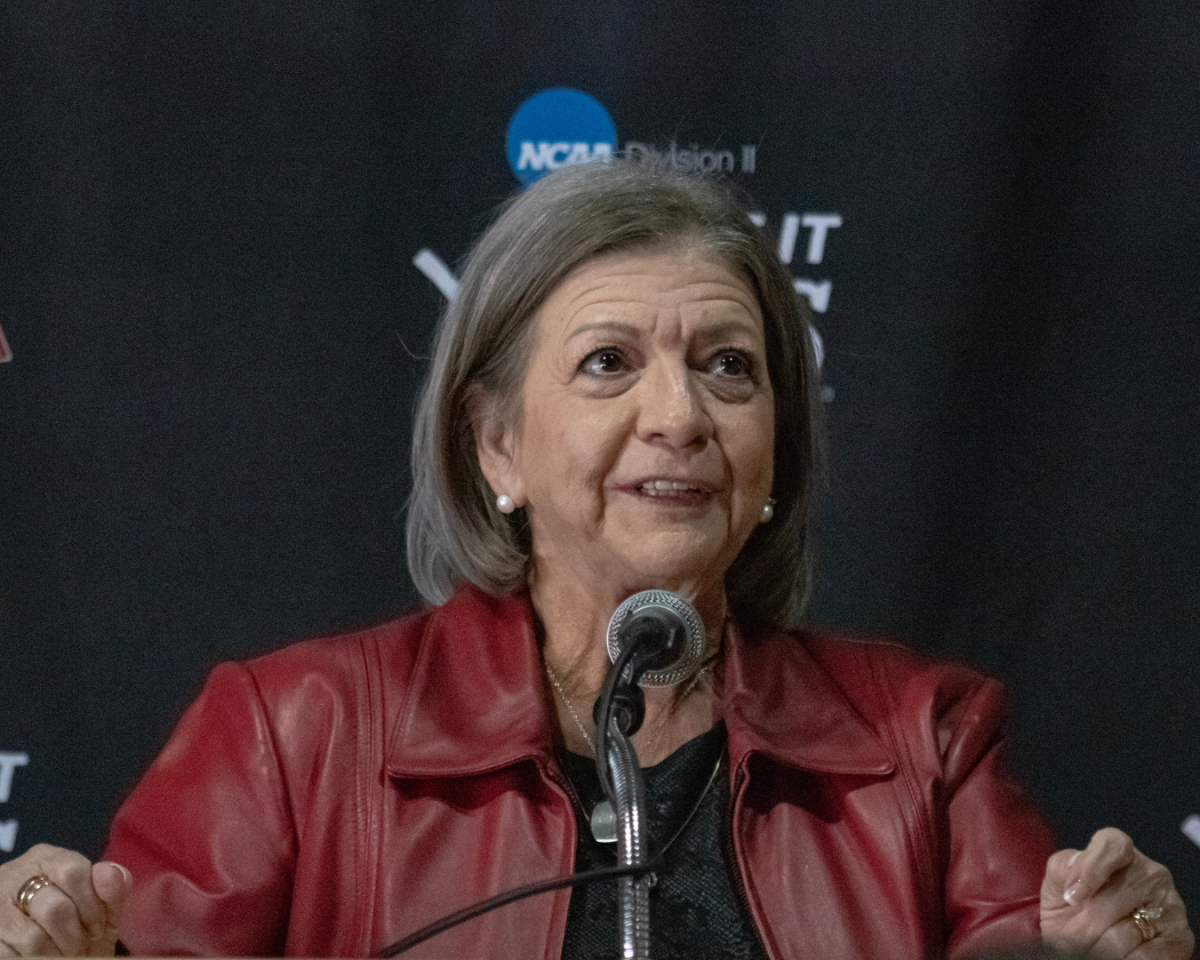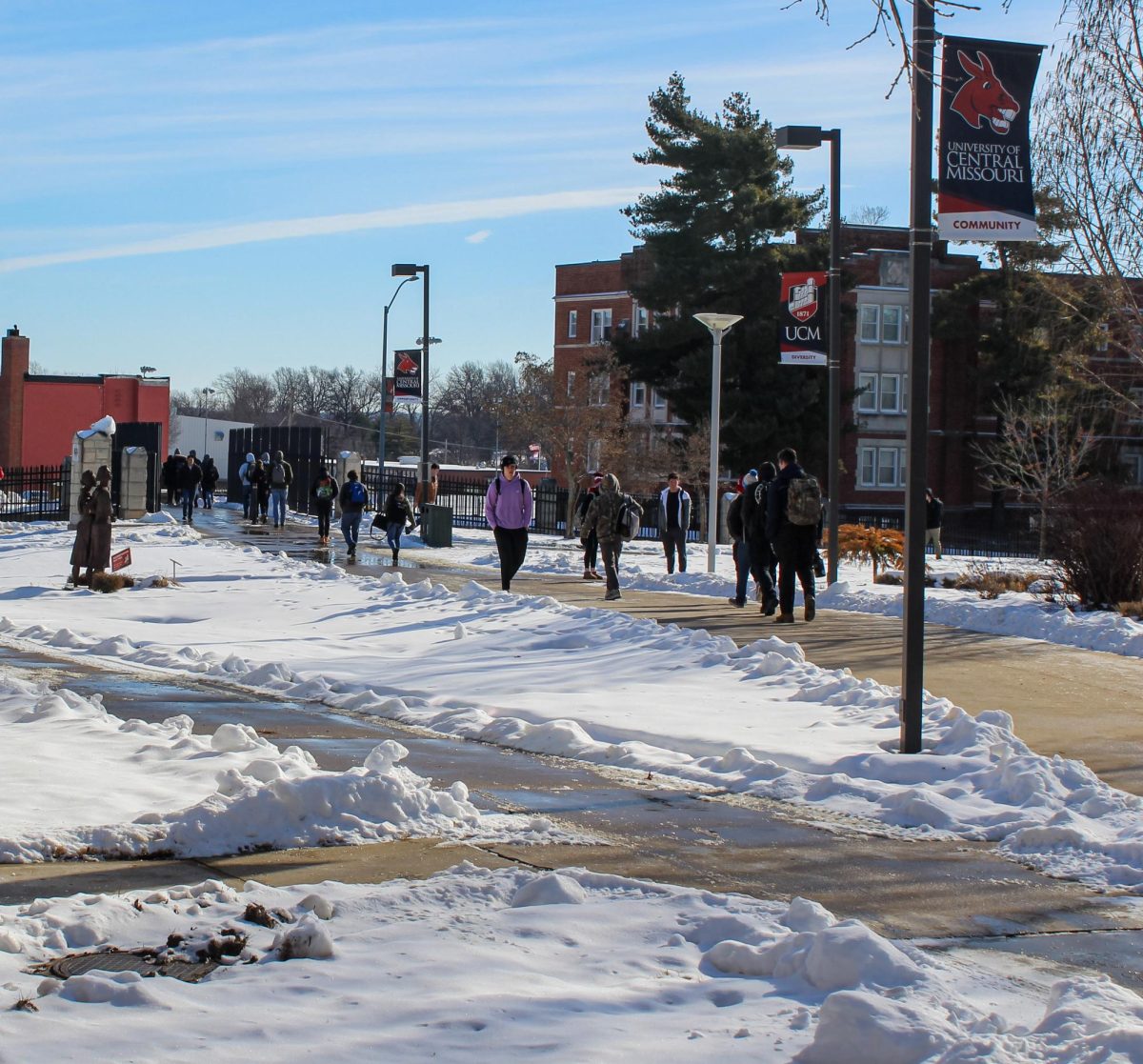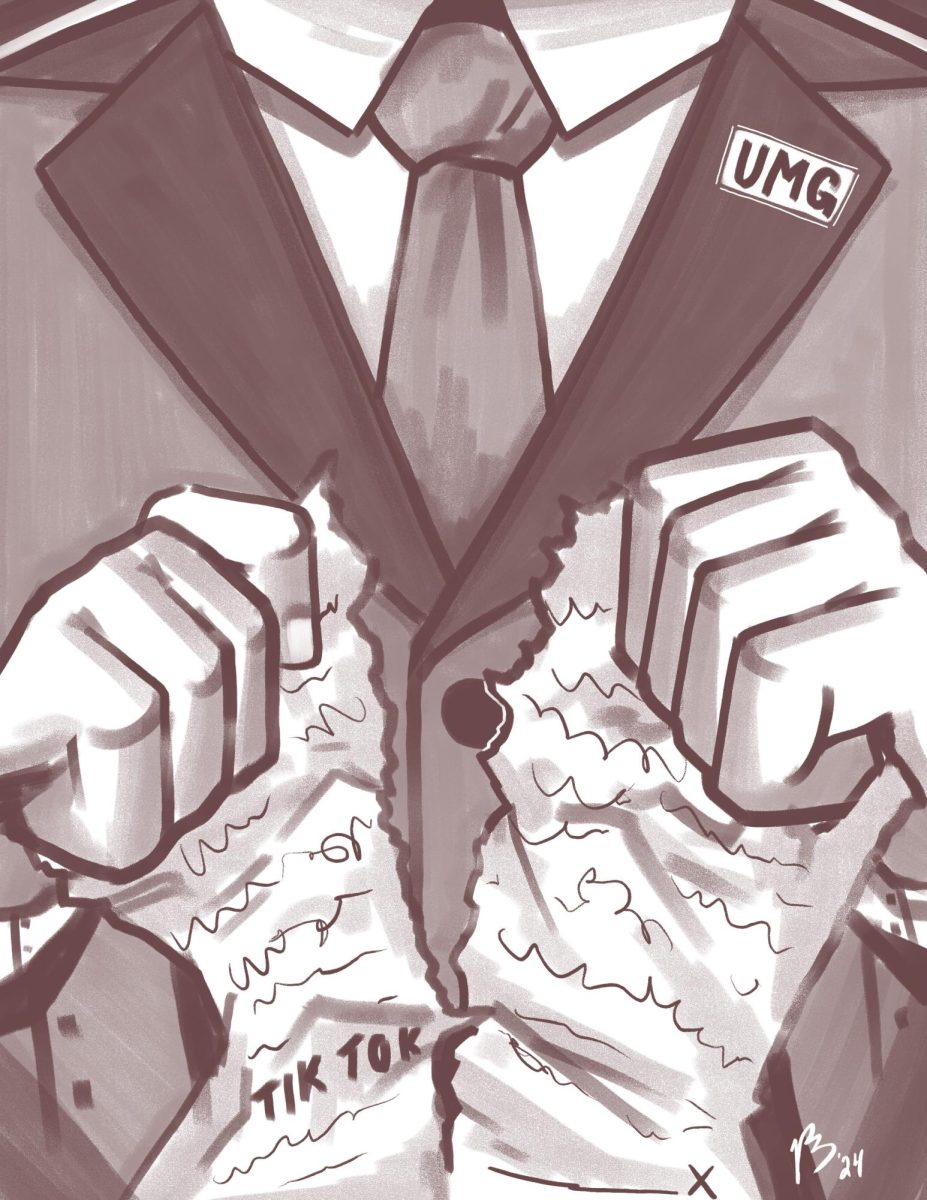The Associated Press
St. Louis Post-Dispatch, Sept. 5
Justice Department investigation will have to expand beyond Ferguson:
A few numbers indicate a civil rights investigation of the Ferguson Police Department is long overdue. On Aug. 28, Attorney General Eric Holder announced the Department of Justice will begin such an inquiry. This is an important and positive step forward, but we suspect when he gets into the numbers, and examines the reality of North St. Louis County, Ferguson will play but a small role in a larger investigation.
First, those numbers:
— As we noted Aug. 10, the day after 18-year-old Michael Brown was shot by Ferguson police officer Darren Wilson, blacks in Ferguson were 37 percent more likely to be pulled over in 2013 than whites, as a percentage of their respective populations. Those black drivers who were pulled over were twice as likely to be searched for contraband, such as drugs, than white drivers, even though police found contraband, percentage-wise, more often in the cars of white drivers.
— In a city that is two-thirds black, only three of its 53 police officers are black.
— And this, from a recent report from Arch City Defenders: “Despite Ferguson’s relative poverty, fines and court fees comprise the second largest source of revenue for the city, a total of $2,635,400. In 2013, the Ferguson Municipal Court disposed of 24,532 warrants and 12,018 cases, or about 3 warrants and 1.5 cases per household.”
None of these things, on their own, are proof positive of institutional racism or civil rights violations. But together, they help paint a picture that explains why tens of thousands of African-Americans in the St. Louis region have taken to the streets in anger, not just over the shooting of a black teenager by a white police officer, but over years of being subject to different rules when dealing with the justice system partly, if not mostly, because of the color of their skin.
Mr. Holder’s challenge, and he seems to understand this, is that Ferguson is but one jagged piece of a complicated jigsaw puzzle of municipalities that exacerbates the problems of concentrated poverty faced by many blacks in the St. Louis region.
In addition to investigating the Ferguson Police Department for a potential pattern of civil rights violations, Mr. Holder said the Justice Department and the St. Louis County Police Department are entering into a “collaborative reform effort” to examine police practices in the region, including “stops, searches and arrests” and the police response to the protests.
Further, Mr. Holder said, “We will follow the facts and the law wherever they lead.”
Washington Post reporter Radley Balko offered a pretty good road map on Aug. 26 of where Mr. Holder’s investigation might end. Mr. Balko told the story of Nicole Bolden, a 32-year-old black woman and single mother, who was arrested in Florissant in March after being in a car accident that wasn’t her fault. The police officer found that there were warrants out for Ms. Bolden’s arrest for unpaid traffic tickets. She got cuffed and taken away in front of her children and over the next 36 hours went from jail to jail in Florissant and Hazelwood and St. Charles County to deal with old traffic tickets for speeding, not wearing a seat belt or driving on a suspended license.
Nearly every one of the patchwork of municipalities in St. Louis County depends on traffic enforcement to produce too much of the revenue it needs to run a city. The police departments, nearly all of them, pull over blacks at a higher rate than whites. Some of them operate insidious speed- and red-light cameras to increase revenue. They charge fees and fines beyond the ability of most poor people to pay. Those in poverty pay the price by going to jail. Most of them are black.
Sadly, it’s likely to get worse before it gets better.
On Oct. 1, Flordell Hills becomes the 58th municipality in St. Louis County to have its own police department, the Post-Dispatch’s Jennifer Mann reported Thursday. Twenty-five of those police departments are in cities of less than 5,000 people.
For the most part, those smaller police departments lack the expertise of larger forces such as St. Louis County or the city of St. Louis. They trade officers back and forth, sometimes because the officers seek higher pay, other times, because they need a change of scenery. For example, Mr. Wilson, before he was in Ferguson, plied his trade in the city of Jennings, which disbanded its police force several years ago amid charges of brutality and discrimination.
This is what Mr. Holder is going to find. The facts will reach like tentacles into the larger problems of division in the St. Louis region. He will find that our division, by geography, by arbitrary political boundary, and by race, runs deep.
Such division is part of the massive challenge St. Louis had been trying to deal with even before Ferguson erupted. In our “A Greater St. Louis” series, we have examined the negative effects of political division in a region with 90 municipalities in a county that doesn’t even include the city of St. Louis, which operates as its own city and county. We have called for the region to break down its various barriers and unite, to improve its schools, its business, and help erase its racial divide.
This is a huge, seemingly intractable problem. Ferguson both highlights the need for unity, and, perhaps, because of its attention on the racial component of it, makes it that much more difficult.
In the past five years, Mr. Holder has opened 20 investigations into local police departments of the type he is now ordering in Ferguson, with 300 individual police officers nationwide being prosecuted for some sort of misconduct as a result of those investigations. Those investigations and other reform movements similar to what is being announced in St. Louis County have led to 14 joint agreements between the Justice Department and local law enforcement agencies intended to protect civil rights by improving training and changing procedures that led to high incidents of racial profiling or police brutality.
The Justice Department shining a light on potential civil rights abuses in Ferguson and St. Louis County is a great start. It tells the protesters that the government, the community, has heard their cries for help.
The challenge in St. Louis, though, is that even if the feds and the local police reach an agreement outlining police reform measures in Ferguson, or St. Louis County, or both, such agreements will only tip-toe around the larger unsolved problem created by more than 150 years of division.
___
Columbia Daily Tribune, Sept. 6
Michael Brown’s record:
As the grand jury in Ferguson looks into the shooting death of teenager Michael Brown, reporters pushed for information about Brown’s previous police record as a juvenile. A juvenile court lawyer said at the hearing that Brown faced no juvenile charges at the time of his death and never was convicted of a serious felony.
Those who would justify the police shooting often say “Brown was no angel.” a statement of opinion that has nothing to do with culpability. Even if Brown was suspected of crimes much worse than his record shows, that past record would have nothing to do with whether the white officer was justified shooting the black youth.
State law makes juvenile court records secret under the theory young people deserve to learn how to grow up properly without the burden of earlier mistakes. Even in adult cases, judges routinely keep past brushes with the law away from jurors. The defendant’s past record should not affect the jury’s decision in an unrelated subsequent case.
So it is in the Michael Brown case. Under legal precedent, juvenile records can be made public when the subject is charged with certain violent crimes. The St. Louis Post-Dispatch and a West Coast blogger pushed for the records.
Michael Brown’s past police record is of no legal relevance today, but in the court of public opinion it has become important. A lot of speculation has swirled on the Internet … alleging reasons for denying Brown is the “gentle giant” characterized by his supporters. As usual on the Internet, much or most of this information is false. But regardless, it has nothing to do with culpability in the shooting incident.
The next step is likely to trigger another round of trouble on the streets. The grand jury almost certainly will not indict Ferguson police Officer Darren Wilson, a decision likely to send protesters back onto the streets.
This reaction will be made stronger by the presence of St. Louis County Prosecuting Attorney Robert McCulloch in the secret grand jury proceedings. McCulloch has a good reputation with his peers and should be trusted to conduct the grand jury proceedings as fairly as anyone, but he is suspected by the potentially volatile crowd. Unless evidence surfaces beyond anything we are seeing so far, the chances of an indictment are nil. The stage is set for another round of trouble.
Maybe it would not make a difference if a special prosecutor were on the scene. The argument for keeping McCulloch is strong. He is duly ordained and competent to do this job. One can argue persuasively he should not be frog-marched out of the courthouse by a mob.
As said here before, the officer had the last best chance to avoid the killing. Too bad his bullets found the target. But that doesn’t mean he had no reason to react violently under the circumstances. We remote observers have heard a lot from both sides. The grand jury won’t try to judge what might have been. It will give the officer slack for dealing with a threatening situation.
The whole thing is too damn bad, and, alas, it’s not over yet.
___
Southeast Missourian, Sept. 7
Regrettable politics behind Nixon’s ax:
On June 24, state representative Kathy Swan received an email from a legislative liason regarding the fate of the Cottonwood Residential Treatment Center. The director of behavioral health was meeting with the Cottonwood Residential Treatment Center staff regarding the closure of that facility by the end of the year.
Swan asked the liason whether this was a result of the withholdings the governor had just made.
“This is part of the withhold,” the liason wrote in the email, obtained by the Southeast Missourian. “The decision to close the facility will stand regardless of any changes to the state’s fiscal health.”
This email casts shadows about the motives of the executive branch.
Speaking publicly at an event in Cape Girardeau in mid-August about proposed cuts to the autism center here in Cape Girardeau, Gov. Jay Nixon’s comments indicated the cuts were all about the money and the fiscal health of the state.
Because of Nixon’s posturing that certain tax breaks for businesses would result in catastrophic consequences, he vetoed the bill and then ordered the department of mental health to slash $87 million.
“DMH would be forced to close both state-operated residential facilities for mentally disturbed children,” Nixon said, “including the Cottonwood Center here in Cape.”
So which is it? Is the decision to close a facility that helps mentally and emotionally disabled children a matter of fiscal health, as the governor has said publicly? Or is it a decision already made for other reasons, as indicated in the email to Swan?
Swan has been operating on the assumption that the governor’s ax fell upon Cottonwood for fiscal reasons. Others within the executive branch, including MDH health director Keith Schafer, have indicated it’s about the money as well.
So Swan and many others went to work, coming up with financial plans aimed at saving the institution.
As reported in the Southeast Missourian by staff writer Samantha Rinehart, Cottonwood is a 32-bed residential treament facility (the email from the liason reported it at 28) in Cape Girardeau. It is one of two remaining state mental-health facilities for children, serving patients between the ages of 6 and 17. The other is in St. Louis, which, according to Swan, is not on the chopping block, even though it costs more to the state than the Cape Girardeau facility.
By our measure, Gov. Jay Nixon is using the cuts in general, and Cottonwood specifically, as pawns to dissuade a veto of a tax cut bill passed by the legislature.
Swan and others have worked up a proposal that greatly reduces the financial impact on the state. It’s enlightening, or at least interesting, that the governor or the people under him didn’t make the same attempt or try to work with legislators in the district to come up with a solution before deciding that Cottonwood needed to go. But this is Nixon’s style of leadership. It’s regrettable, albeit understandable, that the governor doesn’t want to rub elbows with the legislative branch that holds Republican majorities; he tends to govern via news conferences and vetoes. But it is surprising and disappointing that the governor is not working harder at finding ways to save programs that help disabled children. To avoid political involvement is one thing. To avoid executive oversight and the work it takes to find solutions is something else entirely.
According to Rinehart’s reporting, Swan and state Rep. Donna Lichtenegger of Jackson have worked with Cottonwood staff on a plan that seeks to increase revenue and decrease costs so the facility can remain open. Swan presented the plan Wednesday morning at a House appropriations committee meeting, and was joined by more than 15 staff members, supporters and parents of children who have received help from Cottonwood. Lichtenegger is a member of the committee.
The numbers are a bit complicated, and Swan is still asking questions about funding mechanisms and how dollars are allocated. The state has had access to the new plan for more than two weeks, and thus far the state has not disputed Swan’s figures.
In general terms, loosening restrictions on who can qualify for services will help generate revenue. According to local officials, certain restrictions put in place in recent years have made it harder for children to qualify for services, and as a result, the center’s occupancy numbers have dropped far from capacity. Under the newer requirements, children in the northern part of the state aren’t eligible unless they have a mental health diagnosis and meet a low IQ threshhold. The state is disputing whether the referral policy has changed at all.
By readjusting requirements and allowing more children to qualify, revenue could considerably close the gap in the dollars the state loses. In fact, when Swan and others began running the numbers they found that some of Cottonwood’s costs — such as fringe benefits and lease contracts — aren’t applied to the DMH, but to other areas of government.
In an Aug. 20 conference call, Swan said the director of the state mental health department offered to support the plan if it was proved to be financially effective. Swan’s latest calculations, based on more referrals and Medicaid contributions to the state, the facility could run in the black from a state perspective.
The governor can and should be credited for spurring the conversation to make Cottonwood more efficient.
Cottonwood should certainly not be a consideration as lawmakers decide on whether to override the governor’s veto on tax cuts. Regardless of the veto voting this week, the governor should reinstate Cottonwood.
To shut down the facility would show the Democratic governor to have put his political agenda above what’s best for all Missourians, but specifically children (and families) who are struggling with mental illness and disabilities.
One can only imagine the attack ads that would be hurled in Nixon’s direction during his next political quest, whatever that might be. How odd it would be if the Democratic governor were to shut down a last-resort mental health facility for kids when it made no economic sense to do so.
___
St. Joseph News-Press, Sept. 3
Speed up approval of drones:
For a second year in a row, farmers in the Midland Empire have been tantalized with an expert’s view of the alluring possibilities posed by drone technology.
And for a second time, these participants at the annual Graves-Chapple Field Day in Atchison County, Mo., have been told legal use of drones remains beyond their reach.
This matter is in the hands of the Federal Aviation Administration, which observers think will miss a Sept. 15 target for writing rules for drones. We’re not sure of the reasons for the delay, but we’re pretty sure of the consequences.
The longer our government takes to vet the use of drones and to provide meaningful guidance to private interests — with agriculture near the top of that list — then the greater risk we’ll miss out on realizing the full potential of this new technology.
Competitors in other countries no doubt will move full-speed ahead during this uncertain time.
The manufacture of drones, along with the technological advancements that surely will come in second- and third-generation versions, largely will take place elsewhere. So will development of creative new uses fueled by placing these devices in the hands of eager innovators.
Further, there is reason to think that drones on the farm will be more than a diversion, but a genuine contributor to advances in productivity, lowering of labor costs and improvements in monitoring animal and plant health. But these positive developments will not come about until drones are approved for least limited, controlled uses such as in agricultural operations.
We have written before about the need to be cautious to protect privacy interests while considering appropriate uses for these small, unmanned aerial vehicles.
But caution must be paired with prudence in ensuring this technology is available for commercial applications sooner rather than later.
A few numbers indicate a civil rights investigation of the Ferguson Police Department is long overdue. On Aug. 28, Attorney General Eric Holder announced the Department of Justice will begin such an inquiry. This is an important and positive step forward, but we suspect when he gets into the numbers, and examines the reality of North St. Louis County, Ferguson will play but a small role in a larger investigation.
First, those numbers:
— As we noted Aug. 10, the day after 18-year-old Michael Brown was shot by Ferguson police officer Darren Wilson, blacks in Ferguson were 37 percent more likely to be pulled over in 2013 than whites, as a percentage of their respective populations. Those black drivers who were pulled over were twice as likely to be searched for contraband, such as drugs, than white drivers, even though police found contraband, percentage-wise, more often in the cars of white drivers.
— In a city that is two-thirds black, only three of its 53 police officers are black.
— And this, from a recent report from Arch City Defenders: “Despite Ferguson’s relative poverty, fines and court fees comprise the second largest source of revenue for the city, a total of $2,635,400. In 2013, the Ferguson Municipal Court disposed of 24,532 warrants and 12,018 cases, or about 3 warrants and 1.5 cases per household.”
None of these things, on their own, are proof positive of institutional racism or civil rights violations. But together, they help paint a picture that explains why tens of thousands of African-Americans in the St. Louis region have taken to the streets in anger, not just over the shooting of a black teenager by a white police officer, but over years of being subject to different rules when dealing with the justice system partly, if not mostly, because of the color of their skin.
Mr. Holder’s challenge, and he seems to understand this, is that Ferguson is but one jagged piece of a complicated jigsaw puzzle of municipalities that exacerbates the problems of concentrated poverty faced by many blacks in the St. Louis region.
In addition to investigating the Ferguson Police Department for a potential pattern of civil rights violations, Mr. Holder said the Justice Department and the St. Louis County Police Department are entering into a “collaborative reform effort” to examine police practices in the region, including “stops, searches and arrests” and the police response to the protests.
Further, Mr. Holder said, “We will follow the facts and the law wherever they lead.”
Washington Post reporter Radley Balko offered a pretty good road map on Aug. 26 of where Mr. Holder’s investigation might end. Mr. Balko told the story of Nicole Bolden, a 32-year-old black woman and single mother, who was arrested in Florissant in March after being in a car accident that wasn’t her fault. The police officer found that there were warrants out for Ms. Bolden’s arrest for unpaid traffic tickets. She got cuffed and taken away in front of her children and over the next 36 hours went from jail to jail in Florissant and Hazelwood and St. Charles County to deal with old traffic tickets for speeding, not wearing a seat belt or driving on a suspended license.
Nearly every one of the patchwork of municipalities in St. Louis County depends on traffic enforcement to produce too much of the revenue it needs to run a city. The police departments, nearly all of them, pull over blacks at a higher rate than whites. Some of them operate insidious speed- and red-light cameras to increase revenue. They charge fees and fines beyond the ability of most poor people to pay. Those in poverty pay the price by going to jail. Most of them are black.
Sadly, it’s likely to get worse before it gets better.
On Oct. 1, Flordell Hills becomes the 58th municipality in St. Louis County to have its own police department, the Post-Dispatch’s Jennifer Mann reported Thursday. Twenty-five of those police departments are in cities of less than 5,000 people.
For the most part, those smaller police departments lack the expertise of larger forces such as St. Louis County or the city of St. Louis. They trade officers back and forth, sometimes because the officers seek higher pay, other times, because they need a change of scenery. For example, Mr. Wilson, before he was in Ferguson, plied his trade in the city of Jennings, which disbanded its police force several years ago amid charges of brutality and discrimination.
This is what Mr. Holder is going to find. The facts will reach like tentacles into the larger problems of division in the St. Louis region. He will find that our division, by geography, by arbitrary political boundary, and by race, runs deep.
Such division is part of the massive challenge St. Louis had been trying to deal with even before Ferguson erupted. In our “A Greater St. Louis” series, we have examined the negative effects of political division in a region with 90 municipalities in a county that doesn’t even include the city of St. Louis, which operates as its own city and county. We have called for the region to break down its various barriers and unite, to improve its schools, its business, and help erase its racial divide.
This is a huge, seemingly intractable problem. Ferguson both highlights the need for unity, and, perhaps, because of its attention on the racial component of it, makes it that much more difficult.
In the past five years, Mr. Holder has opened 20 investigations into local police departments of the type he is now ordering in Ferguson, with 300 individual police officers nationwide being prosecuted for some sort of misconduct as a result of those investigations. Those investigations and other reform movements similar to what is being announced in St. Louis County have led to 14 joint agreements between the Justice Department and local law enforcement agencies intended to protect civil rights by improving training and changing procedures that led to high incidents of racial profiling or police brutality.
The Justice Department shining a light on potential civil rights abuses in Ferguson and St. Louis County is a great start. It tells the protesters that the government, the community, has heard their cries for help.
The challenge in St. Louis, though, is that even if the feds and the local police reach an agreement outlining police reform measures in Ferguson, or St. Louis County, or both, such agreements will only tip-toe around the larger unsolved problem created by more than 150 years of division.
___
Columbia Daily Tribune, Sept. 6
Michael Brown’s record:
As the grand jury in Ferguson looks into the shooting death of teenager Michael Brown, reporters pushed for information about Brown’s previous police record as a juvenile. A juvenile court lawyer said at the hearing that Brown faced no juvenile charges at the time of his death and never was convicted of a serious felony.
Those who would justify the police shooting often say “Brown was no angel.” a statement of opinion that has nothing to do with culpability. Even if Brown was suspected of crimes much worse than his record shows, that past record would have nothing to do with whether the white officer was justified shooting the black youth.
State law makes juvenile court records secret under the theory young people deserve to learn how to grow up properly without the burden of earlier mistakes. Even in adult cases, judges routinely keep past brushes with the law away from jurors. The defendant’s past record should not affect the jury’s decision in an unrelated subsequent case.
So it is in the Michael Brown case. Under legal precedent, juvenile records can be made public when the subject is charged with certain violent crimes. The St. Louis Post-Dispatch and a West Coast blogger pushed for the records.
Michael Brown’s past police record is of no legal relevance today, but in the court of public opinion it has become important. A lot of speculation has swirled on the Internet … alleging reasons for denying Brown is the “gentle giant” characterized by his supporters. As usual on the Internet, much or most of this information is false. But regardless, it has nothing to do with culpability in the shooting incident.
The next step is likely to trigger another round of trouble on the streets. The grand jury almost certainly will not indict Ferguson police Officer Darren Wilson, a decision likely to send protesters back onto the streets.
This reaction will be made stronger by the presence of St. Louis County Prosecuting Attorney Robert McCulloch in the secret grand jury proceedings. McCulloch has a good reputation with his peers and should be trusted to conduct the grand jury proceedings as fairly as anyone, but he is suspected by the potentially volatile crowd. Unless evidence surfaces beyond anything we are seeing so far, the chances of an indictment are nil. The stage is set for another round of trouble.
Maybe it would not make a difference if a special prosecutor were on the scene. The argument for keeping McCulloch is strong. He is duly ordained and competent to do this job. One can argue persuasively he should not be frog-marched out of the courthouse by a mob.
As said here before, the officer had the last best chance to avoid the killing. Too bad his bullets found the target. But that doesn’t mean he had no reason to react violently under the circumstances. We remote observers have heard a lot from both sides. The grand jury won’t try to judge what might have been. It will give the officer slack for dealing with a threatening situation.
The whole thing is too damn bad, and, alas, it’s not over yet.
___
Southeast Missourian, Sept. 7
Regrettable politics behind Nixon’s ax:
On June 24, state representative Kathy Swan received an email from a legislative liason regarding the fate of the Cottonwood Residential Treatment Center. The director of behavioral health was meeting with the Cottonwood Residential Treatment Center staff regarding the closure of that facility by the end of the year.
Swan asked the liason whether this was a result of the withholdings the governor had just made.
“This is part of the withhold,” the liason wrote in the email, obtained by the Southeast Missourian. “The decision to close the facility will stand regardless of any changes to the state’s fiscal health.”
This email casts shadows about the motives of the executive branch.
Speaking publicly at an event in Cape Girardeau in mid-August about proposed cuts to the autism center here in Cape Girardeau, Gov. Jay Nixon’s comments indicated the cuts were all about the money and the fiscal health of the state.
Because of Nixon’s posturing that certain tax breaks for businesses would result in catastrophic consequences, he vetoed the bill and then ordered the department of mental health to slash $87 million.
“DMH would be forced to close both state-operated residential facilities for mentally disturbed children,” Nixon said, “including the Cottonwood Center here in Cape.”
So which is it? Is the decision to close a facility that helps mentally and emotionally disabled children a matter of fiscal health, as the governor has said publicly? Or is it a decision already made for other reasons, as indicated in the email to Swan?
Swan has been operating on the assumption that the governor’s ax fell upon Cottonwood for fiscal reasons. Others within the executive branch, including MDH health director Keith Schafer, have indicated it’s about the money as well.
So Swan and many others went to work, coming up with financial plans aimed at saving the institution.
As reported in the Southeast Missourian by staff writer Samantha Rinehart, Cottonwood is a 32-bed residential treament facility (the email from the liason reported it at 28) in Cape Girardeau. It is one of two remaining state mental-health facilities for children, serving patients between the ages of 6 and 17. The other is in St. Louis, which, according to Swan, is not on the chopping block, even though it costs more to the state than the Cape Girardeau facility.
By our measure, Gov. Jay Nixon is using the cuts in general, and Cottonwood specifically, as pawns to dissuade a veto of a tax cut bill passed by the legislature.
Swan and others have worked up a proposal that greatly reduces the financial impact on the state. It’s enlightening, or at least interesting, that the governor or the people under him didn’t make the same attempt or try to work with legislators in the district to come up with a solution before deciding that Cottonwood needed to go. But this is Nixon’s style of leadership. It’s regrettable, albeit understandable, that the governor doesn’t want to rub elbows with the legislative branch that holds Republican majorities; he tends to govern via news conferences and vetoes. But it is surprising and disappointing that the governor is not working harder at finding ways to save programs that help disabled children. To avoid political involvement is one thing. To avoid executive oversight and the work it takes to find solutions is something else entirely.
According to Rinehart’s reporting, Swan and state Rep. Donna Lichtenegger of Jackson have worked with Cottonwood staff on a plan that seeks to increase revenue and decrease costs so the facility can remain open. Swan presented the plan Wednesday morning at a House appropriations committee meeting, and was joined by more than 15 staff members, supporters and parents of children who have received help from Cottonwood. Lichtenegger is a member of the committee.
The numbers are a bit complicated, and Swan is still asking questions about funding mechanisms and how dollars are allocated. The state has had access to the new plan for more than two weeks, and thus far the state has not disputed Swan’s figures.
In general terms, loosening restrictions on who can qualify for services will help generate revenue. According to local officials, certain restrictions put in place in recent years have made it harder for children to qualify for services, and as a result, the center’s occupancy numbers have dropped far from capacity. Under the newer requirements, children in the northern part of the state aren’t eligible unless they have a mental health diagnosis and meet a low IQ threshhold. The state is disputing whether the referral policy has changed at all.
By readjusting requirements and allowing more children to qualify, revenue could considerably close the gap in the dollars the state loses. In fact, when Swan and others began running the numbers they found that some of Cottonwood’s costs — such as fringe benefits and lease contracts — aren’t applied to the DMH, but to other areas of government.
In an Aug. 20 conference call, Swan said the director of the state mental health department offered to support the plan if it was proved to be financially effective. Swan’s latest calculations, based on more referrals and Medicaid contributions to the state, the facility could run in the black from a state perspective.
The governor can and should be credited for spurring the conversation to make Cottonwood more efficient.
Cottonwood should certainly not be a consideration as lawmakers decide on whether to override the governor’s veto on tax cuts. Regardless of the veto voting this week, the governor should reinstate Cottonwood.
To shut down the facility would show the Democratic governor to have put his political agenda above what’s best for all Missourians, but specifically children (and families) who are struggling with mental illness and disabilities.
One can only imagine the attack ads that would be hurled in Nixon’s direction during his next political quest, whatever that might be. How odd it would be if the Democratic governor were to shut down a last-resort mental health facility for kids when it made no economic sense to do so.
___
St. Joseph News-Press, Sept. 3
Speed up approval of drones:
For a second year in a row, farmers in the Midland Empire have been tantalized with an expert’s view of the alluring possibilities posed by drone technology.
And for a second time, these participants at the annual Graves-Chapple Field Day in Atchison County, Mo., have been told legal use of drones remains beyond their reach.
This matter is in the hands of the Federal Aviation Administration, which observers think will miss a Sept. 15 target for writing rules for drones. We’re not sure of the reasons for the delay, but we’re pretty sure of the consequences.
The longer our government takes to vet the use of drones and to provide meaningful guidance to private interests — with agriculture near the top of that list — then the greater risk we’ll miss out on realizing the full potential of this new technology.
Competitors in other countries no doubt will move full-speed ahead during this uncertain time.
The manufacture of drones, along with the technological advancements that surely will come in second- and third-generation versions, largely will take place elsewhere. So will development of creative new uses fueled by placing these devices in the hands of eager innovators.
Further, there is reason to think that drones on the farm will be more than a diversion, but a genuine contributor to advances in productivity, lowering of labor costs and improvements in monitoring animal and plant health. But these positive developments will not come about until drones are approved for least limited, controlled uses such as in agricultural operations.
We have written before about the need to be cautious to protect privacy interests while considering appropriate uses for these small, unmanned aerial vehicles.
But caution must be paired with prudence in ensuring this technology is available for commercial applications sooner rather than later.
Story continues below advertisement

